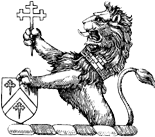
Tolkien’s Insights into the Feminine Soul
ICONS OF THE VIRGIN MARY IN 'THE LORD OF THE RINGS'
Contrary to popular opinion and the portrayals in film adaptations of his The Lord of the Rings trilogy — including those by Peter Jackson, the recent Rings of Power Amazon Prime series, and The War of the Rohirrim animated movie — J.R.R. Tolkien (1892-1973) had a great love for women. He was neither a feminist nor a misogynist. For him, a woman is good as a woman, not just when she tries to impersonate a man. Tolkien’s deep appreciation for what’s called the “feminine genius” is reflected throughout his nonfiction writings, private correspondence, and works of fiction.
The greatest female influence in Tolkien’s life was his mother, Mabel. She raised him and his brother, Hilary, as a single parent after her husband’s untimely death and instructed them in the faith following her conversion to Catholicism. She endured persecution from her anti-Catholic relatives, finally succumbing, as Tolkien recalls, to “heroic sufferings and early death in extreme poverty” — passing away from diabetes when Tolkien was only 12. Her example inspired him for the rest of his life. “My own dear mother,” he said, “was a martyr indeed, and it is not to everybody that God grants so easy a way to his great gifts as he did to Hilary and myself, giving us a mother who killed herself with labour and trouble to ensure us keeping the faith” (quoted in Humphrey Carpenter’s J.R.R. Tolkien: A Biography, 1977).
Tolkien learned from a young age to respect the intellectual capacity of women. “It is to my mother who taught me (until I obtained a scholarship at the ancient Grammar School in Birmingham) that I owe my tastes for philology, especially of Germanic languages, and for romance,” he wrote. Before he entered school, she had already instilled in him a lifelong love of botany, taught him to read, and instructed him in Latin, French, and German. Tolkien continued to advance women’s education by tutoring many female students while an Oxford professor and encouraging his daughter Priscilla’s learning.
More well known is Tolkien’s devotion to his beloved wife, Edith, to whom he remained faithful from the time he met her until her death (he passed away shortly after she did). C.S. Lewis once described Tolkien as “the most married man I know” (quoted in Holly Ordway’s Tolkien’s Faith: A Spiritual Biography, 2023) for the great comfort he took in being a husband and father. Despite their occasional tensions, Tolkien cared for Edith through her many health struggles and always provided for her needs.
You May Also Enjoy
We can't wait on the conversion of Russia; we have to attend to our own personal conversion and work for the conversion of the Church and our own nation.
I first read Graham Greene’s The Heart of the Matter in 1948, when it came…
A people, such as the Russians, who have produced and who still honor writers like Gorki, Dostoyevsky, and Tolstoy deserve to be regarded with respect.

